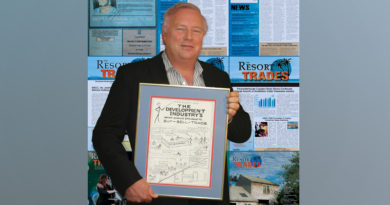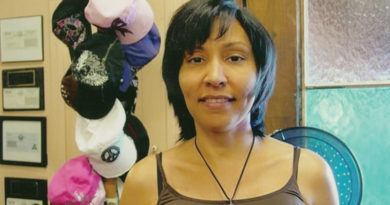ARDA at 44, timeshare at 50
Washington has its own opera company and many singers at musical performances. But the most noticeable voice for the shared ownership industry does not ring out at the Kennedy Center.
Rather, as companies and executives in the shared ownership vacation industry know, the industry’s clarion call comes from a different source. It is a powerful force stating its case on Capitol Hill, in statehouses and city halls across the U.S., and even in foreign markets. That voice belongs to ARDA – the American Resort Development Association.
Although in human terms, on its 44th birthday ARDA is middle-aged, the group has been active, vibrant, creative, flexible, adaptable, and effective in the past and at present. It has had a dynamic group of volunteer leaders from the business and in the association officers and staff since it began. From all many indications, it is having no mid-life crisis.
Instead, given its vibrant growth, resiliency, and timeshare industry and staff effectiveness, plus strategic positioning of shared ownership as a better way to vacation, ARDA has a long life ahead of it. Its future is rooted in the very characteristics that enabled it to survive so long, and so strong.
To tell our story, we begin with a short American history lesson.
Foresighted Frenchman: Act one
In 1835 in his classic, “Democracy in America,” France’s Alexis de Toqueville wrote these prophetic observations: “Americans of all ages, all conditions, and all dispositions constantly form associations” for commercial and “a thousand other purposes,” such as building inns.
A new law passed in 1968 led a new group to form in 1969 and follow a path that led to that very focus for what led to a new type of “inn” crowd. The statute was the Interstate Land Sales Full Disclosure Act (ILSFDA or the Act). It came about as a result of alleged sales and development abuses by a small number of developers.
To comply with the Act, covered developers had to make detailed disclosures to the Office of Interstate Land Sales Registration (OILSR) at the Department of Housing and Urban Development.
Two young lawyers, Bill Ingersoll and Gary Terry, had an idea as to how land developers could deal effectively with challenges from the Act and OILSR, as well as growing state regulation. They created a new trade association, the American Land Development Association, or ALDA. Gary became its first leader, and Bill, together with his partner, the energetic and sartorially splendid Stuart Marshall Bloch, became counsel to ALDA and many developers who needed their expertise for the Act and related state laws.
Only a few years later, the Federal Trade Commission entered the land sales arena. It began investigations and actions against some of the largest land sellers, such as Horizon, GAC, and Amrep. The FTC’s major concern was that sellers had misrepresented lots in desert and swampy (“seasonally dry,” as one company spokesman put it) subdivisions as excellent, low-risk investments.
The commission contended that the three targeted companies’ lots were poor, risky investments of little use or value and obtained massive settlements in those cases. As the head of the land sales group, that is where I gained my first, very favorable exposure to ARDA’s founders, and others, such as the inimitable, knowledgeable, and ever-witty Stephany “Sam” Madsen. Conferences, including the inimitable “Land and the Law,” were literally about the law of the land.
Act two, scene one: Timeshare enters the U.S.
In the mid-1970s, ALDA adapted as some developers left land sales for the then-fledgling timeshare industry in the U.S. With the formation of its National Timeshare Council, old companies and new moved increasingly to a concept that was more use- than investment-oriented.
U.S. developers were responding to the U.S. condominium glut by converting apartment condos, hotel, and motel rooms into shared ownership suites.
The idea’s origin came from Hapimag, a Swiss company formed by Dr. Guido Renggli, a Swiss entrepreneur and attorney. Now known as the “Father of Timesharing” and an ARDA Lifetime Achievement winner, he began with a 13-unit shared ownership Swiss project in 1963, later expanding to dozens of resorts in oceanfront, mountain, and urban locations in Europe.
But in Washington, with land sales concerns diminished, the FTC staff had shifted its attention to this new arena by the early 1980s. Once again, perceived bad actors were in the minority but created a wave of negative publicity. In the 1981 Paradise Palms case, the FTC obtained injunctive relief to halt alleged deception in the promotion and sale of timeshare interests in two clubs’ resorts: misrepresentations of the ownership, location, and a number of timeshare units available through those clubs, and purchasers’ ability to exchange their timeshare rights for rights at projects elsewhere.
Later FTC actions dealt mostly with alleged resale abuses by non-developers, including the tsunami of litigation recently unleashed by that agency and other government agencies. The essence of the agency’s complaints was that resellers got listing fees in advance based on claims they could easily resell timeshares, but rarely made sales.
Act two, scene two: Rapid growth
In the mid-1970s timeshare exchange began and greatly expanded the real and perceived value of timeshare units, as owners gained great geographic and seasonal flexibility.
The growth of exchange helped fuel the industry with double-digit annual sales growth for several decades. Other factors included the involvement of some substantial independent developers, more flexibility in the product with “floating weeks” and then points, the creation of a regulatory format in various states with substantive requirements, significant disclosures and rescission periods, and access to capital for development and receivables.
Other factors that propelled U.S. timeshare sales from the millions into the billions of dollars each year and raised the number of resorts from a small number to over 1,600 worldwide included:
• Increased public appetite for better vacations in more comfortable suites with many amenities for an entire family
• Purpose-built units designed for timeshare rather than rehabbed apartments and hotel rooms
• Entry of major lodging brands, starting with Marriott (now in its 30th year in the industry), and later Hyatt, Hilton, and more
• Creation of solid independent brands, such as Jim Lambert’s The Berkley Group, Kemmons Wilson’s Orange Lake in Orlando, Westgate, Grand Pacific, and more
• The rise of independent management companies, such as Liberté in Florida, and GoodManagement in Virginia
• Conceptualization of “vacation ownership” and “shared ownership,” to overcome some occasional negative press for alleged timeshare sales tactics
• High-powered, professional research, led by industry guru, Dr. Richard Ragatz, and other top consultants
• More luxurious timeshares and even higher-end products, in the form of fractional resorts
• More effective marketing to prior visitors and current owners
Over the years, the timeshare’s growing role led ARDA to change its name. It became ARRDA, the second “R” for Recreational, then back to four letters with ARDA. After Gary Terry retired, other capable chieftains headed the group – Tom Franks, then Cindy Huheey.



